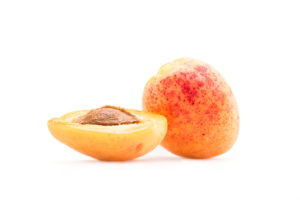Q. I’m concerned about my fifteen-year-old Apricot tree. In the spring the growth is lush and vigorous, but in the early summer one branch or limb will become sick and dies. Eventually, I have little or no tree left. This is the second apricot tree to decline similarly. What can be done to prevent this?
A. The primary causes of die back in the canopy of apricot trees are Phytophthora Root Rot and Eutypa Die Back. They affect both major and minor branches or limbs, and the disease symptoms look very similar. The one factor that distinguishes or separates the two diseases is when the die back occurs. Phytophthora Root Rot is a soil-borne fungus that attacks the roots of Apricot, along with Cherries, Peaches, Nectarines, Plums, and many other ornamentals. Root rot is the primary suspect when a limb or section of a tree fails to break dormancy and leaf out. It’s the causal agent when for no apparent reason the foliage on a branch collapses or wilts and turns brown shortly after the rainy season concludes. You would expect this problem in clay soils that drain poorly and receive excessive summer irrigation. A good soaking with a large watering basin once every three weeks is sufficient for established apricots as well as other fruit trees, and planting under their canopy is discouraged. Phytophthora Root Rot is a slowly developing disease. You’ll find more information at online at Http://ipm.ucanr.edu/PMG/r5100911.html. However, from your description, I don’t think root rot is your problem. Instead, Eutypa Die Back would be my guess. Eutypa Die Back is only an issue with Apricot trees and grapes. It’s an airborne fungus that enters the tree through the pruning wounds made during the winter months when it’s wet and damp. The affected branches or limbs collapse in the late spring, after Memorial Day, or in the early summer for no apparent reason. You prevent this from occurring by changing the time of the year you prune. It is now recommended to prune Apricots is the late summer. Although the leaves haven’t dropped the tree is going dormant as its growing season has concluded.
You’ll find more information about Eutypa Die Back at Http://ipm.ucanr.edu/PMG/r5100911.html
Note: When fruit trees are under stress, borers will attack, and it’s not uncommon for globs of amber colored sap to be on the limbs and branches. Also, it is possible for an Apricot to be suffering from both of these diseases concurrently.
Q. I have several beautiful rose bushes, but they’re developing small red flowers on some aggressive growth that in some cases are over eight feet tall. The growth is taking over the rose bushes. What can I do to prevent this from happening?
A. Most of the modern-day roses are not growing on their own roots. Instead, they are budded on to a second type of rose known as the rootstock. They are joined together at the bud union. The bud union is the large knot near the ground. Any shoots or growth from below the bud union is growing off the rootstock. This plant produces a single, cherry red flower, which is what I think you are describing. These rogue shoots are commonly referred to as suckers. Roses sucker naturally, so it’s impossible to prevent them from reoccurring. All you can do is be observant and prune off the shoots as they develop.
Q. I’ve been successful keeping my Hydrangeas blue by applying a weekly, diluted, solution of Aluminum Sulfate. I’ve also turned my white Hydrangea blue. Now, I’m experimenting by applying it to several roses, Iceberg, a pure white and Sterling Silver, pale lavender. What might I expect?
A. I’d expect there would be no color change in the roses. Roses, unlike Hydrangeas, are not affected by the acidity or alkalinity of soil. Acidity or alkalinity is measured by the pH scale which runs from one to fourteen. A reading of seven is neutral while seven or below is acid and eight an above is alkaline, It’s the acid soil that makes Hydrangeas blue while alkaline soil turns them pink. In between, they revert to white. Aluminum Sulfate is an acidifier, but there are several others available. I’d be concerned if the pH falls below five. So far, I doubt that has happened. You can monitor the pH with a simple pH kit available at your favorite garden centers.
Leave a Reply